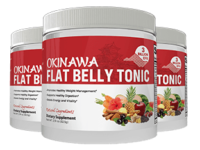High consumption of fat or of the combination of fat and carbohydrates causes obesity, heart disease, and other health problems. However, the different types of fat have very different effects on health. Here is a survey of the different fat categories and their effects:
Mono-unsaturated fat – This type of fat prevents heart disease and circulatory disease in moderate amounts.
Omega-6-poly-unsaturated fat – This fat type prevents heart disease if you do not consume too much of it. However, it causes inflammatory reactions. These types of reactions are benign when they are moderate and when they are provoked to fight disease. But a constant high inflammatory response is dangerous and can cause rheumatism, heart trouble, and cancer. Very high consumption of this type of fat is therefore dangerous.
Omega-3-poly-unsaturated fat – This type of fat prevents heart disease and reduces inflammatory reactions in moderate amounts. Therefore it also reduces the risk of cancer, intestinal inflammations, and rheumatism.
Omega-9-poly-unsaturated fat – This type of fat also prevents heart disease and reduces inflammatory reactions in moderate amounts. Therefore it reduces the risk of cancer, intestinal inflammations, and rheumatism.
Saturated fat – This type of fat is probably not dangerous in small amounts. In higher amounts, saturated fat gives high cholesterol levels, causes clogging of the blood vessels, causes coronary heart disease, and increases the risk of infarct of the heart and other organs.
Cholesterol – Cholesterol is a fat-like compound found in food but also synthesized from saturated fat the body. A high intake of saturated fat or of cholesterol itself, therefore, elevates the cholesterol level in the body. Cholesterol is a necessary compound, but in higher amounts, it causes clogging of the blood vessels, causes coronary heart disease, and increases the risk of infarct of the heart and other organs.
Trans-fat – This type of fat is produced chemical processing to yield specific mechanical properties. Margarine often contains this type of fat. This type of fat is dangerous and is probably a causal component of heart disease and cancer. There is however one exception: Some amount of fat-containing trans acid conjugated linoleic acid seems to be benevolent for skin health and may help reduce weight. Conjugated linoleic acid is found in milk and butter.
COMMON PROBLEMS OF THE AVERAGE DIET
The average American and European diet generally contain too much fat and carbohydrates combined. The fat consumed is generally a mixture of trans fat, saturated fat, and omega-6-poly-unsaturated fat. This bad fat consumption causes overweight and is probably a major contributing component to the incidence of heart disease, cancer, intestinal inflammatory diseases, rheumatism, and other inflammatory conditions.
RECOMMENDED AMOUNT OF FAT IN THE DIET:
A bit of common advice is to let 25-30 % of the energy needed to be covered fat and the rest carbohydrates. However, experts do not agree with his point. Some recommend a low carbohydrate diet with more fat, and others recommend a high carbohydrate diet with a low-fat amount.
In either case, the combined intake of fat and carbohydrates should not be much higher than your daily energy consumption if you have a normal or wanted weight. If you want to lose weight, this combined amount must be lower. If you want to gain weight, it should be higher.
THE RIGHT MIXTURE OF FAT TYPES
The right mixture of different fat types is as important as the amount of fat in the diet to keep good health. However, you must not take the percent ratios given here too literally, since there is little agreement about the exact ratios that should be recommended. Furthermore, if you have an active lifestyle that demands a lot of energy, this is best achieved increasing the number of carbohydrates and mono-unsaturated fat.
Mono-unsaturated fat – Ideally as much as 35% of the fat consumption should be from this type of fat. You can find this fat in olive oil, raps oil, and walnut oil.
Omega-6-poly-unsaturated fat – 30 % of the fat consumption should be from this fat type. You find it in soy oil and corn oil.
Omega-3-poly-unsaturated fat and omega-9-poly-unsaturated fat – 20 % of the fat consumption should be this type. You find it in fish oil and in fat fish. If you suffer from inflammatory conditions like rheumatism and intestinal inflammation, you will probably benefit from increasing the amount of this fat type and reducing the amount of other fat types.
Saturated fat – Not more than 15 % of the fat consumption should be saturated fat. Saturated fat is found in fat from mammals, coconut fat, and milk.
Cholesterol – The cholesterol level in the body depends upon the combined amount of consumed cholesterol itself and saturated fat. To keep the cholesterol level right, you should not consume too much-saturated fat, and not very much food containing cholesterol, like eggs and spawn.
Trans-fat – This type of fat should ideally not be a part of the diet at all. Margarine, cookies, snacks, and often also bread contain this type of fat. It is therefore important to reduce the consumption of margarine, cookies, snacks, and to check the composition of the bread you consume.
Conjugated linoleic acid – This is perhaps the only trans fatty acid that is benevolent in some amount. It is found in natural milk fat, and you can buy dietary supplements of this substance. A small amount of this substance may help keep your skin healthy and may help you to reduce weight.
4 Offers: Fat Burning Kitchen, 101 Anti-aging Foods, Truthaboutabs Etc

Good Trans Fats vs. Bad Trans Fat Revealed
These types of SATURATED fat actually SLOW aging in your body




